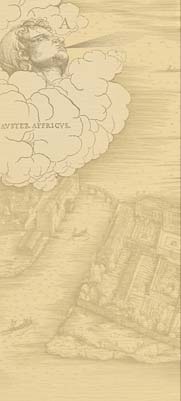Michael's Life: Homo de Conseio and Armiraio 1435-1443
From 1435 to 1443, Michael was at the pinnacle of his career. Twice he served as armiraio. He served in no lower position than homo de conseio, except on one special occasion.
Tasks of the homo de conseio
The office of homo de conseio, or "man of the council," existed only on merchant galleys. Unfortunately, the functions of the position are not well understood. Some sources suggest that the homo de conseio was responsible for navigation. But it seems that navigation was handled by the comito and the paron, assisted by the nochieri, and the homo de conseio does not appear to have been their direct superior. On the other hand, representatives of the investors frequently sailed on board, convening as a council to discuss issues as they arose during a voyage. Michael may have acted as an aide to this council, giving the merchants the benefit of his long experience.
The homo de conseio, however, was not hired by the investors. Instead, he was elected by state officials in an annual competition pitting about 30 mariners of similar skill and experience against each other. These elections were fierce. Michael had put his name forward for election as homo de conseio many times since he had first held the post as a special honor in 1417. Until this last phase of his career, he succeeded only once, in 1430.
It appears that Michael wrote his manuscript to influence these elections by demonstrating the extent of his knowledge and experience. If so, it worked. But we don't really know why the position was so eagerly sought by senior officers. The main attraction may have been the increased size of the portata, which meant they could carry many more precious goods to sell on their own account and thereby make more money.
Between 1435 and 1443, Michael served in the commercial fleet. In 1436, he sailed to Flanders as armiraio under captain of the fleet Franzescho Chapello. This voyage was marred by another tragedy for Michael. He returned home to find his second wife, Cataruccia, dead.
Michael also sailed on three voyages which, although they involved commerce, were actually special missions for the state.
Special missions
Two of these missions were of potentially world-changing significance.
The first was the journey of Byzantine Emperor John VIII to Italy to attend a major church council in 1437. John VIII needed the financial and military support of the West to save what was left of his empire from the Turks. To get that support, he was willing to make a historic sacrifice and agree to the unification of the Greek Orthodox and Roman Catholic Churches under the authority of the pope in Rome. The emperor attended church councils in Ferrara and Florence, where he officially agreed to the unification.
Michael also sailed as homo de conseio in the fleet that returned the emperor to Constantinople in 1439. However, John's Greek Orthodox subjects refused to accept the authority of Rome. No money and precious little military aid arrived from the West. Constantinople fell to the Turks in 1453, marking the ultimate end of the Roman Empire.
Michael's other special mission took place in 1440. In that year, he was armiraio of the merchant galley fleet that brought King Janus of Cyprus his Venetian wife before sailing on to Beirut.
Commercial voyages
Apart from mixed diplomatic and trading voyages, Michael sailed on five commercial voyages as homo de conseio during the final phase of his career.
In 1435 he traveled to Moncastro, an unusual destination for the galleys of Romania. Through this port on the western coast of the Black Sea, the Venetians hoped to open up a new line of trade into Russia and Ukraine; the effort was short-lived.
In 1438, Michael went to London, and in 1441 to Flanders. In 1442, he journeyed for the third time to Alexandria. In 1443, he sailed on what would be his last voyage, back to London.
< Comito | The Final Years >











